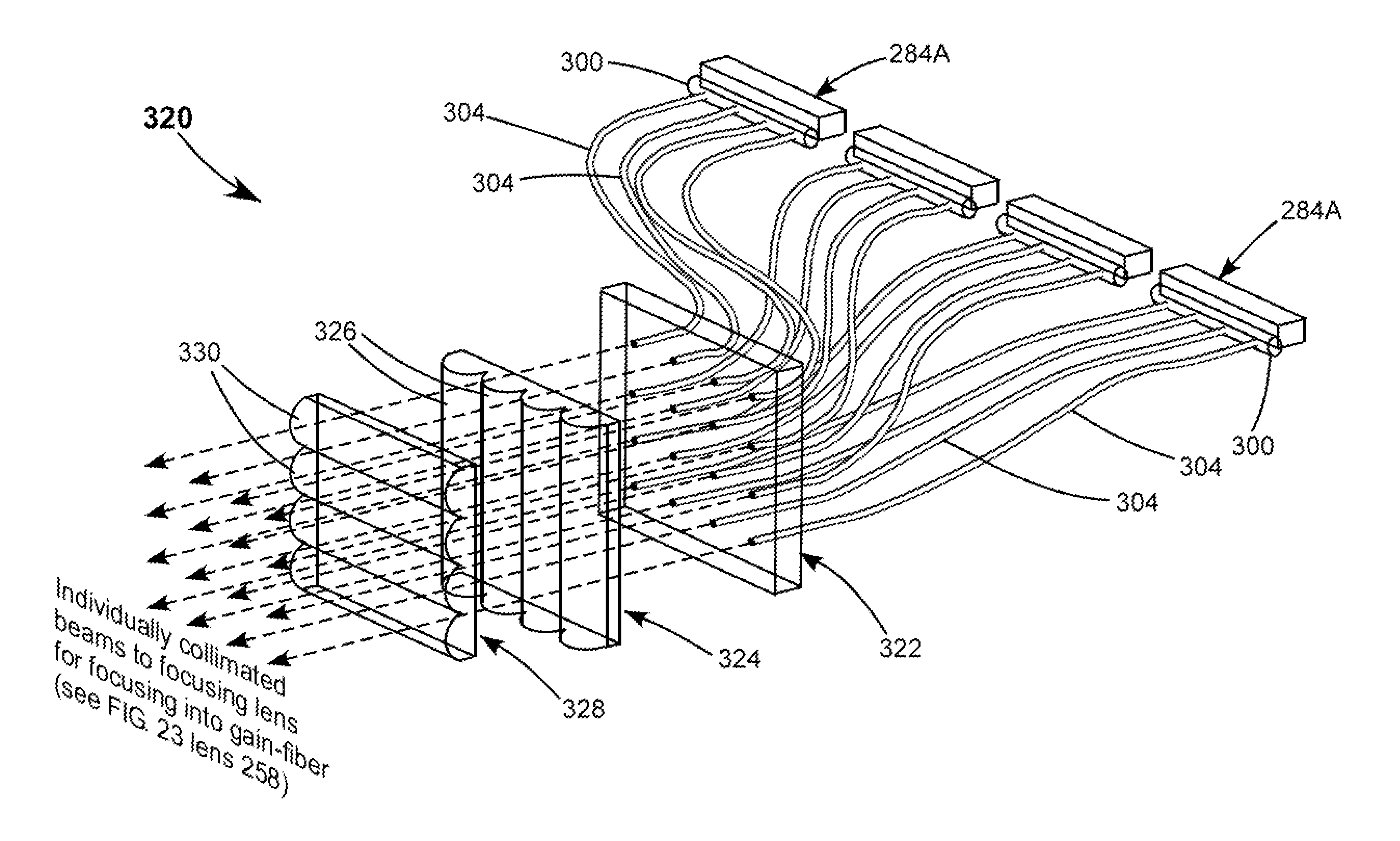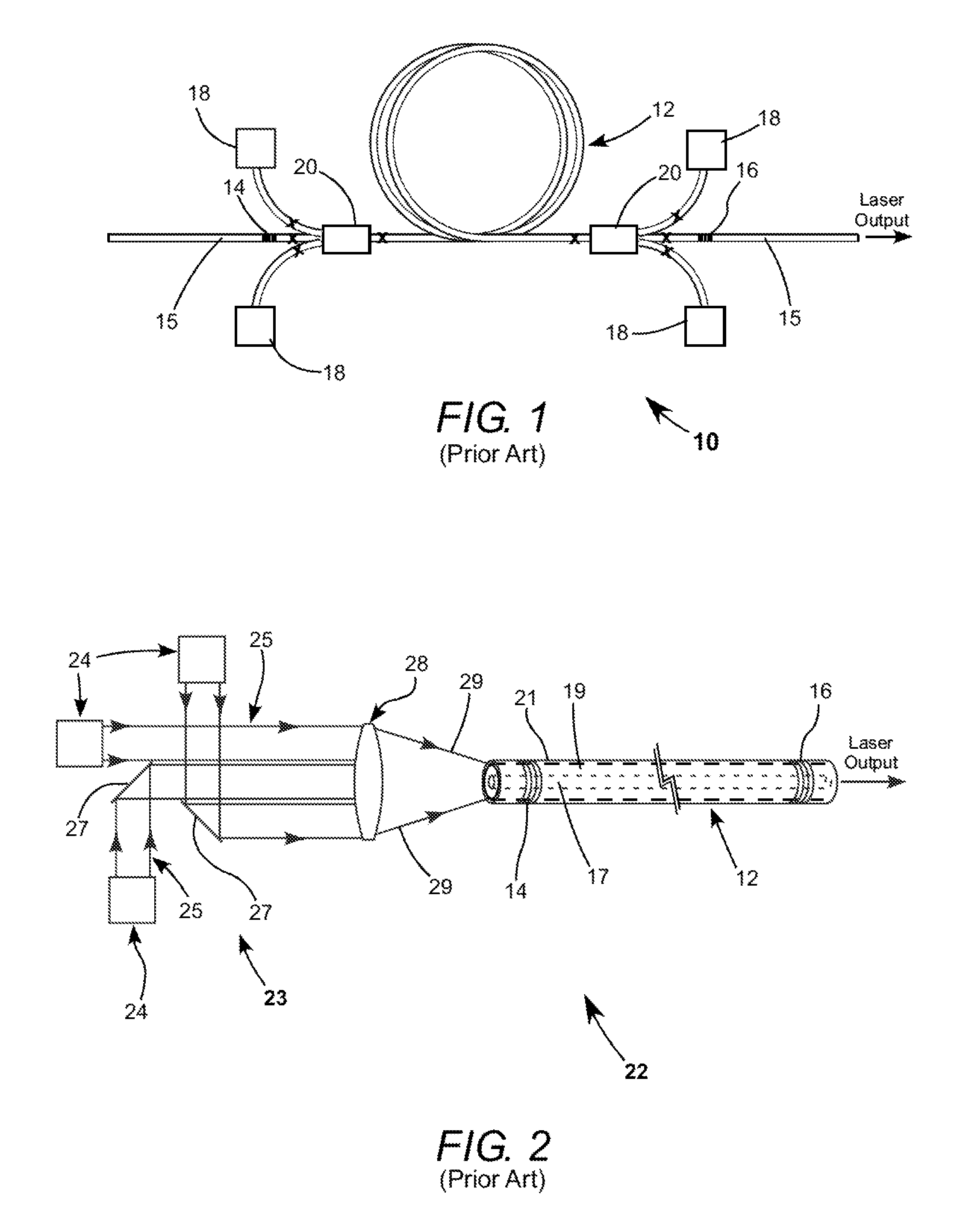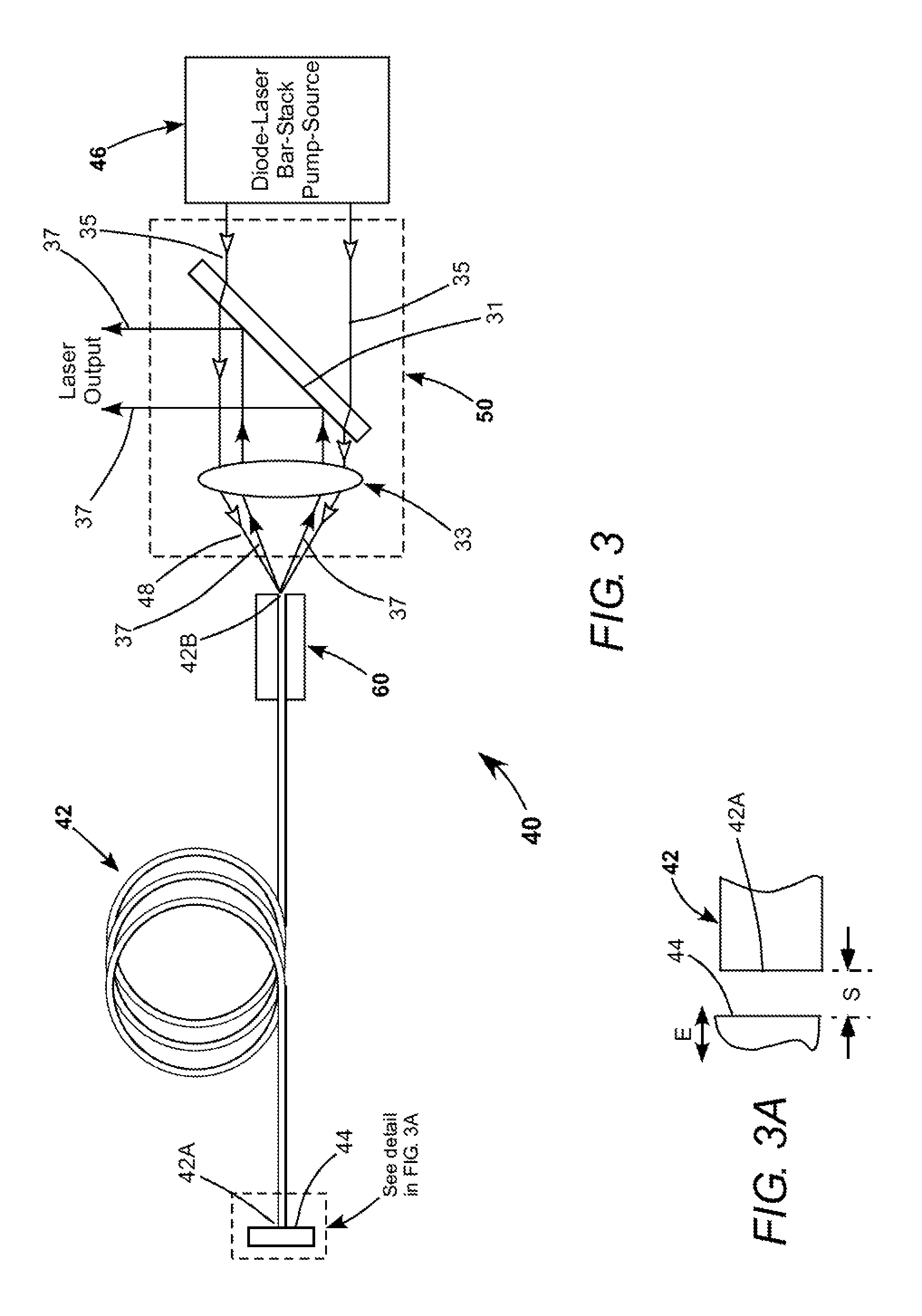High-power CW fiber-laser
a fiber-laser, high-power technology, applied in the direction of optical resonator shape and construction, semiconductor lasers, active medium materials, etc., can solve the problems of limited output power of fiber-lasers, reduced absorption efficiency, and reduced efficiency, and achieve the effect of minimizing the scattering of stimuli and high transmissivity
- Summary
- Abstract
- Description
- Claims
- Application Information
AI Technical Summary
Benefits of technology
Problems solved by technology
Method used
Image
Examples
Embodiment Construction
[0048]Continuing with reference to the drawings, wherein like components are designated by like reference numerals, FIG. 3 schematically illustrates a basic embodiment 40 of a fiber-laser in accordance with the present invention. Laser 40 includes a multi-mode gain-fiber 42 having a mirror 44 which is maximally reflective in the gain-bandwidth of the gain-fiber and proximity-coupled to one end 42A of the gain-fiber. The opposite end 42B of the gain-fiber is preferably left uncoated, which provides for only about 4% reflectivity, not significantly wavelength selective. This low reflectivity provides a very high (96%) output-coupling percentage for a resonator formed between mirror 44 and the uncoated end of the gain-fiber. In the inventive fiber-laser, output-coupling greater than 90% is preferred.
[0049]Pump-radiation for gain-fiber 42 is supplied by a diode-laser bar-stack source 46 including a plurality of diode-laser bars (not shown in FIG. 3). A combined collimated beam from the ...
PUM
 Login to View More
Login to View More Abstract
Description
Claims
Application Information
 Login to View More
Login to View More - R&D
- Intellectual Property
- Life Sciences
- Materials
- Tech Scout
- Unparalleled Data Quality
- Higher Quality Content
- 60% Fewer Hallucinations
Browse by: Latest US Patents, China's latest patents, Technical Efficacy Thesaurus, Application Domain, Technology Topic, Popular Technical Reports.
© 2025 PatSnap. All rights reserved.Legal|Privacy policy|Modern Slavery Act Transparency Statement|Sitemap|About US| Contact US: help@patsnap.com



